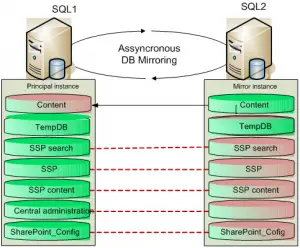 The article Asynchronous vs. Synchronous Interactions (Kung-Ming, T.; Khoon-Seng, S. “Asynchronous vs. Synchronous Interaction.” Encyclopedia of Distance Learning Vol. 1(2000): 104-113) presents the advantages of asynchronous and synchronous interactions in online education, focusing on three kinds of interaction: learner-learner, learner-instructor and learner-content.
The article Asynchronous vs. Synchronous Interactions (Kung-Ming, T.; Khoon-Seng, S. “Asynchronous vs. Synchronous Interaction.” Encyclopedia of Distance Learning Vol. 1(2000): 104-113) presents the advantages of asynchronous and synchronous interactions in online education, focusing on three kinds of interaction: learner-learner, learner-instructor and learner-content.
By asynchronous it is understood the interaction that occurs at different times, not in real time (the most common example of such an interaction is the use of e-mail). Synchronous interaction occurs at the same time and the exchange of information is done in real time (for example instant messaging applications).
Asynchronous interaction
(Keywords: no real-time interaction)
Advantages of asynchronous interaction
– flexibility: information can be accessed at anytime from anyplace;
– time to reflect: learners can give a reply to the problems raised when they’re comfortable with the topic;
– anonymity and pseudonymity: as the face-to-face interaction is lacking, the shyer learners feel less pressure and thus their contribution to the discussion might be of a better quality;
– no time-zone constraints: learners from different parts of the word follow the same course at the same time;
– situated learning: the learners can apply the theories from the studied course in their own working environment;
– cost-effective: all a learner needs is a computer and a decent internet connection.
Examples of asynchronous interaction
– CD-ROMs
– listserv (a group of e-mail addresses)
– bulletin boards (online forums)
– newsgroups (information is received via newsfeeds)
– web pages
– computer conferencing
– fax
– audiotape / videotape
– collaborative work spaces (information available to multiple users that can be added on or modified by the users themselves)
– blogs (weblogs)
Impact of asynchronous interaction
– learner-learner: quality of interaction improves due to the learner having enough time to process the topics and respond in a meaningful way (“higher order thinking skills occurring” – p.107);
– learner-instructor: instructor can focus on the learner’s needs;
– learner-content: learner has time to digest the contents; learner is able to access online notes (written by all course participants).
Synchronous interaction
(Keywords: real-time interaction)
Advantages of synchronous interaction
– stimulate motivation: via real-time interaction and ability to see and hear the online classmates;
– interactive participation: step by step instructions can be given and followed in real time;
– immediate feedback: from both learners and instructor, thus allowing brainstorming of ideas, case-study analysis, debates and project work;
– user-friendly technological tools for effective learning: only basic ICT skills needed;
– costs and time saving: no real venue for the class needed.
Examples of synchronous interaction
– IRC – Internet Relay Chat (chat rooms)
– instant messaging
– real-time audio
– application sharing (learners can add, make changes or delete info on a shared software application)
– voice and videoconferencing
– share whiteboards and live presentation tools
– live assessment testing and voting
– audience control tools
Impact of synchronous interaction
– learner-learner: the larger the group, the less interactivity possible;
– learner-instructor: only “lower thinking skills can be achieved” (p.109);
– learner-content: learners need to contribute and participate.

